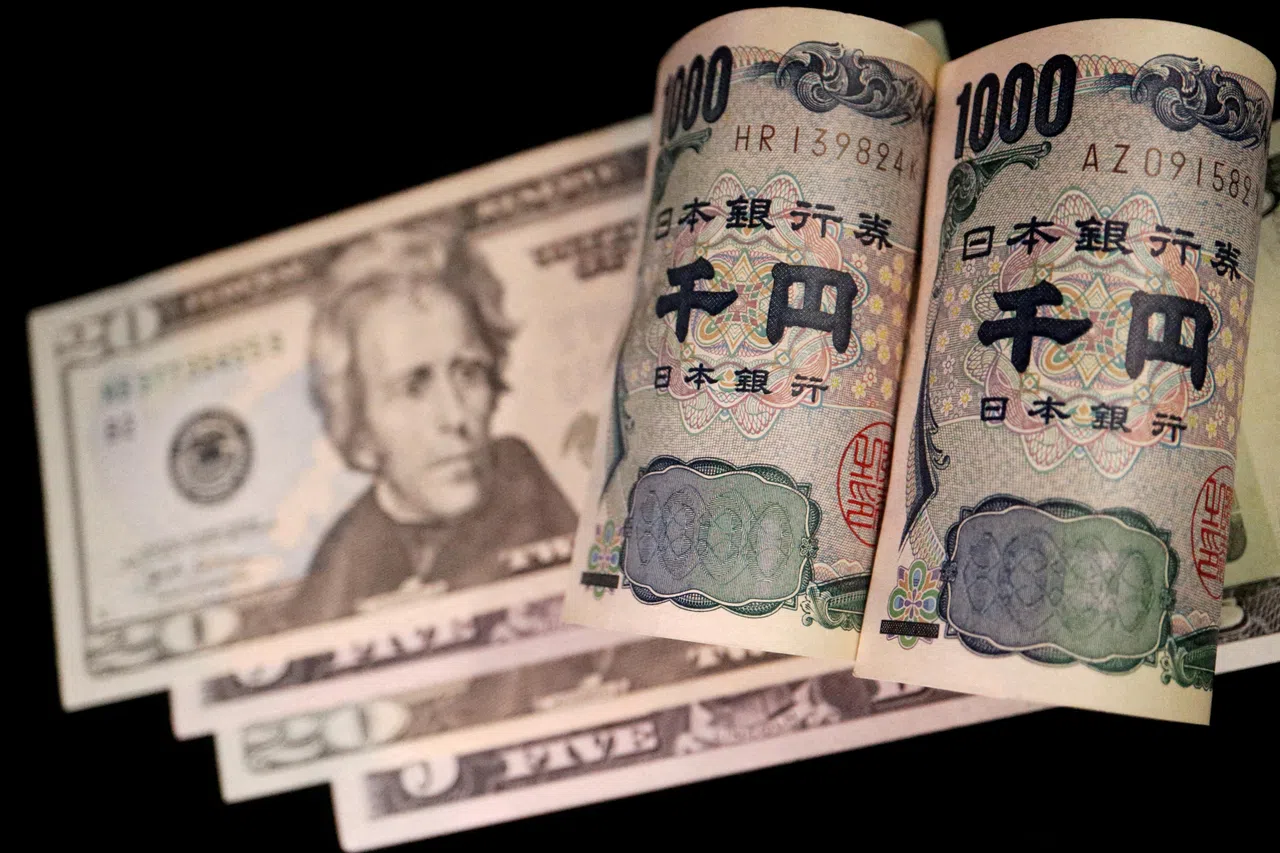The yen dropped against the dollar on Tuesday (Apr 30), giving up some of its sharp gains the previous day sparked by suspected intervention by Japanese authorities.
The currency was down 0.35 per cent to 156.90 per dollar, but off its 34-year low of 160.245 hit on Monday, when traders say yen-buying intervention by Tokyo drove a eye-catching rebound of nearly six yen.
It briefly dropped earlier in the session and stayed for a couple of minutes at 156.50, before recovering to 157.
Japanese officials may have spent some US$35.05 billion supporting the currency on Monday, Bank of Japan data suggested on Tuesday.
“I think the BOJ will now wait for the dust to settle, but the 160 level remains the red line,” said Athanasios Vamvakidis, global head G10 forex strategy at BofA.
“Markets will test that level again, and if the Japanese authorities do not step in, the dollar can go much higher versus the yen,” he added.
GET BT IN YOUR INBOX DAILY
Start and end each day with the latest news stories and analyses delivered straight to your inbox.
The Bank of Japan (BOJ) on Tuesday left its plan for monthly bond buying unchanged for May. Japan’s government bond (JGB) investors are looking for clues on the timing of a taper, which will lead to higher, more attractive yields, supporting the yen.
“Facing that (the rates divergence between Japan and US) with forex intervention typically does not end well,” said Garvey Padhraic, regional head of research Americas at ING.
“The more obvious solution to this is for Japanese rates to rise. If they don’t, something will have to give. And the bigger the hold-out, the bigger is the subsequent reaction,” he added.
The Federal Reserve begins its two-day monetary policy meeting on Tuesday, where it’s expected to hold rates at 5.25 per cent-5.5 per cent, while striking a hawkish message.
“The Fed policy meeting could be a non-event for the euro/dollar as (chair Jerome) Powell will not be as dovish as last time, but the market is already discounting such a backdrop by fully pricing just one rate cut in 2024,” Vamvakidis argued.
Traders have recently pared back bets of Fed rate cuts this year amid hotter-than-expected US economic data and stubborn inflation numbers.
A rate cut in September was looking like a close call at just 44 per cent, according to CME Group’s FedWatch tool.
The dollar was down 0.02 per cent to 105.67 against a basket of currencies ahead of the Fed’s meeting, after slipping 0.25 per cent in the previous session.
“Fresh US data has prompted our US economist to push out his projection of the start of the Fed’s easing cycle to 2025 from December 2024,” said Thierry Wizman, global forex and rates strategist at Macquarie.
“We don’t rule out that the next change may be a hike, which would prompt a new wave of broad-based US dollar strength.”
Other major central banks such as the European Central Bank (ECB) and the Bank of England (BoE) may begin to cut rates in the near future, even if the policy path is more uncertain after recent developments.
Eurozone inflation is on its way back to 2 per cent, but the process is bound to be bumpy and geopolitical tensions pose an upside risk to price growth, ECB Vice President Luis de Guindos said late on Monday.
Data showed that the bloc’s economy rebounded in the first quarter from a mild recession as Germany returned to growth and expansion accelerated elsewhere, while inflation steadied.
The euro fell 0.1 per cent to US$1.0731.
The offshore Chinese yuan slipped 0.1 per cent to US$7.2477 per dollar and has depreciated 2 per cent against the dollar so far this year, despite support from the central bank.
In cryptocurrencies, bitcoin fell 2 per cent to US$63,707.00. REUTERS






